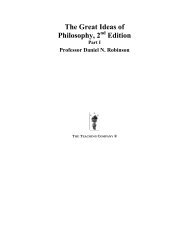English idioms in the first language and second language lexicon: a ...
English idioms in the first language and second language lexicon: a ...
English idioms in the first language and second language lexicon: a ...
You also want an ePaper? Increase the reach of your titles
YUMPU automatically turns print PDFs into web optimized ePapers that Google loves.
336 <strong>English</strong> <strong>idioms</strong> <strong>in</strong> <strong>the</strong> L1 <strong>and</strong> L2 <strong>lexicon</strong>h<strong>and</strong>, <strong>the</strong>y were directly compared to <strong>the</strong> native judgements (for adetailed discussion of <strong>the</strong>oretical <strong>and</strong> methodological aspects ofnonnative judgements, see Chaudron, 1983; Sorace, 1990; 1996). Thef<strong>in</strong>d<strong>in</strong>gs were used to support <strong>the</strong> DIR Model, which is suitable forboth <strong>the</strong> L1 <strong>and</strong> <strong>the</strong> L2 <strong>lexicon</strong>.2 Nonnative speakersFirst, it should be noted that for nonnatives <strong>the</strong>re is no such idiomresearch tradition comparable to <strong>the</strong> L1 psychol<strong>in</strong>guistic studiesdiscussed above (but see Irujo, 1986a; 1993). Most studies deal with<strong>idioms</strong> <strong>and</strong> <strong>the</strong> problems <strong>the</strong>y cause for <strong>the</strong> foreign <strong>language</strong> learner,result<strong>in</strong>g <strong>in</strong> suggestions on how to teach <strong>the</strong>m better (e.g., Irujo,1986b; Otier, 1986; Lattey, 1994; McCaskey, 1994; Duquette, 1995;Richards, 1996; Lennon, 1998; for details, see Abel, 2003). Therefore,<strong>the</strong> follow<strong>in</strong>g has <strong>the</strong> character of a pilot study <strong>in</strong> that it tries toconsider <strong>in</strong>sights ga<strong>in</strong>ed from L1 research <strong>in</strong> order to provide a<strong>the</strong>oretical framework for future empirical studies on <strong>idioms</strong> <strong>and</strong> L2.In two separate studies, nonnative judgements on <strong>the</strong> decomposabilityof <strong>English</strong> <strong>idioms</strong> were conducted. Study 1 dealtexclusively with verbal <strong>idioms</strong> (V + DET + N, e.g., miss <strong>the</strong> boat,steal <strong>the</strong> show, shoot <strong>the</strong> breeze), while Study 2 used <strong>idioms</strong> withvarious syntactic forms (e.g., back to square one, a piece of cake).Study 1 restricted itself to verbal <strong>idioms</strong> <strong>in</strong> order to control for <strong>the</strong>syntactic structure of <strong>the</strong> data <strong>and</strong> to keep <strong>the</strong> sort<strong>in</strong>g task simplebecause of <strong>the</strong> nonnative sample. Study 2 was designed to yield anidentical dataset to that reported on by Titone <strong>and</strong> Conn<strong>in</strong>e (1994)for a direct comparison between natives <strong>and</strong> nonnatives. Although<strong>the</strong> focus of <strong>the</strong> present study was on <strong>the</strong> decomposability sort<strong>in</strong>gtask, participants also rated <strong>the</strong> familiarity of <strong>idioms</strong> <strong>and</strong> <strong>the</strong> easeof <strong>the</strong> decomposability decision. Familiarity refers to <strong>the</strong> knowledgeof mean<strong>in</strong>g a participant has about an idiom. Ease of decision waschecked <strong>in</strong> order to control for <strong>the</strong> difficulties nonnatives mighthave <strong>in</strong> rat<strong>in</strong>g <strong>idioms</strong>. The participants who rated decomposabilitywere also asked to <strong>in</strong>dicate how difficult or easy <strong>the</strong>y found <strong>the</strong>decision about each idiom’s decomposability on a 5-po<strong>in</strong>t scale. Theresults did not show relevant differences between <strong>the</strong> nonnativeparticipants <strong>and</strong> a native control group, which <strong>in</strong>dicated thatnonnatives have no difficulties with judgement tasks of this type.Therefore, this factor is not considered here any fur<strong>the</strong>r (for details,see Abel, 2003).a Participants: A total of 169 graduate <strong>and</strong> undergraduatestudents at <strong>the</strong> University of Wuppertal, Germany, participated <strong>in</strong>Downloaded from http://slr.sagepub.com at Shanghai Jiaotong University on March 7, 2009














